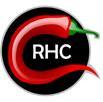Questo è un servizio gratuito offerto da Red Hot Cyber alla comunità. Consente di consultare, in un’unica pagina, le informazioni relativa ad una singola CVE provenienti dal National Vulnerability Database (NVD) e del National Institute of Standards and Technology (NIST) degli Stati Uniti d’America, del Forum of Incident Response and Security Teams (FIRST) per quanto riguarda l’EPSS score e il percentile, i dati del catalogo KEV del Cybersecurity and Infrastructure Security Agency (CISA), oltre a risorse selezionate di Red Hot Cyber e altre fonti internazionali.
National Vulnerability Database Information
Descrizione: An elevation of privilege vulnerability exists when an attacker establishes a vulnerable Netlogon secure channel connection to a domain controller, using the Netlogon Remote Protocol (MS-NRPC). An attacker who successfully exploited the vulnerability could run a specially crafted application on a device on the network.
To exploit the vulnerability, an unauthenticated attacker would be required to use MS-NRPC to connect to a domain controller to obtain domain administrator access.
Microsoft is addressing the vulnerability in a phased two-part rollout. These updates address the vulnerability by modifying how Netlogon handles the usage of Netlogon secure channels.
For guidelines on how to manage the changes required for this vulnerability and more information on the phased rollout, see How to manage the changes in Netlogon secure channel connections associated with CVE-2020-1472 (updated September 28, 2020).
When the second phase of Windows updates become available in Q1 2021, customers will be notified via a revision to this security vulnerability. If you wish to be notified when these updates are released, we recommend that you register for the security notifications mailer to be alerted of content changes to this advisory. See Microsoft Technical Security Notifications.
Base Score CVSS: 5.5 (v3.1)
Il **Base Score CVSS** è un punteggio da **0 a 10** che rappresenta la gravità intrinseca di una vulnerabilità. Un punteggio più alto indica una gravità maggiore.
0.02.55.07.510.0
Pubblicato il: 17/08/2020 19:15:15
Ultima modifica: 22/10/2025 00:17:02
NIST: Sorgente CVE dal National Vulnerability Database (NVD)
Metriche CVSS Dettagli
- Base Severity: MEDIUM
- Vector String: CVSS:3.1/AV:L/AC:L/PR:L/UI:N/S:U/C:H/I:N/A:N
- Attack Vector: LOCAL
- Attack Complexity: LOW
- Privileges Required: LOW
- User Interaction: NONE
- Scope: UNCHANGED
- Confidentiality Impact: HIGH
- Integrity Impact: NONE
- Availability Impact: NONE
FIRST information
EPSS Score: 0.9442
L'**EPSS (Exploit Prediction Scoring System)** è un punteggio da **0 a 1** che indica la **probabilità** che una vulnerabilità venga sfruttata nel mondo reale nei prossimi 30 giorni. Un valore più alto indica una maggiore probabilità di exploit.
0.00.250.50.751.0
Percentile: 0.9998
Il **Percentile** indica quanto il punteggio EPSS di questa vulnerabilità sia più alto rispetto a quello di tutte le altre vulnerabilità nel database EPSS. Ad esempio, un percentile di 0.90 (90%) significa che il 90% delle vulnerabilità ha un EPSS score uguale o inferiore a quello attuale.
0.00.250.50.751.0
*Dati aggiornati al: 2025-10-27
CISA Information (Known Exploited Vulnerabilities)
Il **CISA KEV Catalog** elenca le vulnerabilità che sono state **attivamente sfruttate nel mondo reale**. Se una CVE è presente in questo catalogo, indica che la minaccia è immediata e la mitigazione dovrebbe essere una priorità assoluta.
La CVE **CVE-2020-1472** **È PRESENTE** nel CISA KEV Catalog!
- Nome della Vulnerabilità: Microsoft Netlogon Privilege Escalation Vulnerability
- Descrizione Breve: Microsoft's Netlogon Remote Protocol (MS-NRPC) contains a privilege escalation vulnerability when an attacker establishes a vulnerable Netlogon secure channel connection to a domain controller. An attacker who successfully exploits the vulnerability could run a specially crafted application on a device on the network. The vulnerability is also known under the moniker of Zerologon.
- Data Aggiunta al KEV: 03/11/2021
- Vendor/Prodotto: Microsoft / Netlogon
- Required Action: Apply updates per vendor instructions.
- Due Date: 21/09/2020



